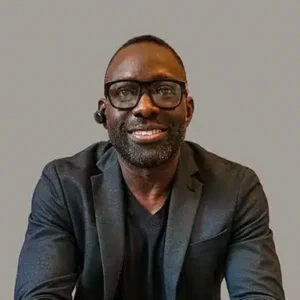Introduction
Endoscopic sleeve gastroplasty (ESG) is a minimally invasive procedure designed to help patients lose weight by reducing stomach volume using an endoscopic suturing device. Unlike traditional weight loss surgery, ESG does not require incisions or the removal of stomach tissue. Many patients considering the procedure wonder, “Is endoscopic sleeve gastroplasty reversible?” This article explores ESG’s reversibility, benefits, and risks to help individuals make informed decisions about their weight loss goals.
Understanding Endoscopic Sleeve Gastroplasty (ESG)
ESG is a bariatric procedure that uses an endoscopic suturing device attached to an endoscope, a flexible tube equipped with a tiny camera. The doctor inserts the endoscope through the mouth into the stomach and places sutures to reshape it into a smaller, sleeve-like structure. This reduces stomach volume, limiting the amount of food a patient can consume.
ESG vs. Other Bariatric Procedures
Compared to gastric bypass, laparoscopic sleeve gastrectomy, or laparoscopic band surgery, ESG offers a minimally invasive approach with fewer serious complications. Unlike traditional bariatric surgery, ESG does not involve cutting or removing parts of the stomach tissue.
Can ESG Be Reversed?
While ESG is intended as a permanent weight loss procedure, it is possible to reverse it. The sutures placed during the procedure can be removed endoscopically, allowing the stomach to return to its original size. However, reversal is not a common practice and is typically considered only if the patient experiences serious complications or fails to achieve significant weight loss. Patients interested in knowing if ESG reversible should discuss the options with their doctor.
Factors That Influence ESG Reversal
Several factors determine whether ESG can be reversed:
1. Time Since Procedure
If patients seek reversal shortly after ESG, it may be more feasible before the stomach heals. The healing process begins immediately after the procedure, and as time passes, the stomach tissue adjusts to its new shape. If too much time has passed, reversing ESG may become increasingly difficult, requiring additional interventions. Patients should consult their doctor about whether ESG reversible is an option for them based on their timeline.
2. Healing Process
The human body is highly adaptive, and the stomach begins healing as soon as the sutures are placed. The longer the stomach remains in its reduced state, the more it adjusts to that shape. Over time, fibrous tissue may develop around the sutures, making reversal more complicated. In cases where reversal is necessary, early intervention is often the most successful approach.
3. Medical Necessity
A doctor may consider reversal if a patient experiences severe nausea, high blood pressure, or an inability to maintain a healthy diet. Patients who develop serious digestive issues, excessive acid reflux, or persistent vomiting after ESG may require intervention. If these complications do not resolve with standard medical treatments, removing the sutures may be an option to alleviate discomfort and restore normal stomach function. In these cases, understanding whether ESG reversible is essential.
4. Effectiveness of Weight Loss Results
Patients who do not experience significant weight loss after ESG may inquire about reversal or additional bariatric procedures. Some individuals may not achieve their desired results due to underlying metabolic conditions or lifestyle factors. In such cases, a doctor might recommend alternative weight loss strategies rather than full reversal.
5. Patient’s Commitment to Lifestyle Changes
Weight loss procedures, including ESG, require long-term lifestyle adjustments. Patients who struggle to adhere to dietary and exercise recommendations may not achieve optimal results. If ESG fails due to non-compliance with medical advice, doctors may be hesitant to reverse it without a solid plan for sustainable weight management.
6. Technical Feasibility of Reversal
While ESG can be reversed by removing sutures, the feasibility of doing so depends on the condition of the sutures and the stomach tissue. If the sutures have become embedded or if scarring has occurred, removal may be challenging. In some cases, additional endoscopic procedures or surgical interventions may be required to safely restore the stomach’s original shape.
Benefits of Endoscopic Sleeve Gastroplasty
ESG offers several advantages over other bariatric procedures, including:
- Minimally invasive procedure with no incisions
- Shorter recovery time (typically four hours of observation and a return to routine in two weeks)
- Reduced risk of serious complications
- Effective in helping patients achieve their weight loss goals
- Improvement in conditions such as fatty liver disease, diabetes, polycystic ovarian syndrome, and sleep apnea
ESG and Its Effectiveness in Weight Loss
Several studies have shown that ESG helps most patients achieve effective weight loss. Patients typically lose 15-20% of their body weight within a year when combined with a healthy lifestyle, including a healthy diet and exercise.
Risks and Considerations of ESG
While ESG is considered safe, it carries some risks, including:
- Nausea and discomfort in the first few days
- Potential for inadequate weight loss
- The possibility of the sutures loosening over time
- Rare complications such as digestive system issues or heart disease
ESG Recovery Process
After the procedure, patients follow a structured recovery plan:
- First Two Weeks – Patients consume soft foods and liquids to allow the stomach to heal.
- Four Weeks Onward – Introduction of solid food with portion control.
- Long-Term Lifestyle Changes – Maintaining good weight loss results requires adherence to a healthy diet and exercise routine.
ESG vs. Sleeve Gastrectomy
Unlike sleeve gastrectomy, which permanently removes part of the stomach tissue, ESG is potentially reversible because no stomach tissue is removed. However, patients should view ESG as a long-term commitment rather than a temporary solution. Understanding ESG reversible possibilities can help patients make informed choices.
Is ESG Right for You?
ESG is recommended for individuals with a body mass index (BMI) of 30-40 who have not achieved weight loss through diet and exercise alone. Those considering ESG should consult a doctor to evaluate their eligibility and discuss potential alternatives.
Alternative Weight Loss Procedures
If ESG is not suitable, other bariatric procedures such as gastric bypass, laparoscopic sleeve gastrectomy, or the accordion procedure may be options. Each procedure has unique benefits, risks, and suitability based on the patient’s health status.
Where to Learn More About ESG
For more details about endoscopic sleeve gastroplasty, visit IBI Healthcare. If you are considering ESG and want a consultation, schedule an appointment here.
Conclusion
So, is endoscopic sleeve gastroplasty reversible? While the sutures can be removed endoscopically, reversal is not a standard practice. ESG is designed as a long-term solution to help patients achieve their weight loss goals. The best results come from committing to a healthy lifestyle that includes proper nutrition and exercise. If you are wondering about ESG reversible options, consult a specialist for guidance.
For further insights on ESG and other bariatric procedures, check out this external resource. Consulting with a qualified doctor is essential for making the best decision regarding your weight loss procedure.










